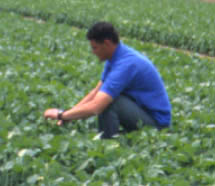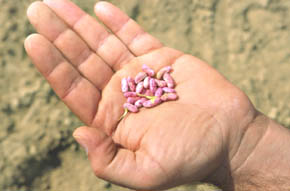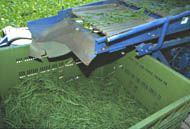

7. Crop Rotation.
Because French beans are a short-cycle crop, they fit easily in a crop rotation plan. At any rate, persistence in the same land plot is absolutely not recommended, as it could foster fungal attacks, notably from Rhizoctonia solani, which attacks the roots from early growth stages, causing the plant to wilt or even die. For the same reason, potato and beet rotations are not recommended. More problems are posed by previous crops that were given herbicides that linger in the soil for a long time. At any rate, to avoid problems, when beans are grown consecutively (two annual cycles on the same plot), a three-year interval is necessary before growing them again. In the case of crop rotation, on the other hand, alternating two or three different crops over time is sufficient.
8. Variety Choice.
The choice
of varieties is fundamental, and should consider agronomic, technological
and commercial factors.
Agronomic factors: the cultivar should be productive, disease-resistant
and as adaptable as possible to climate conditions.
Technological factors: the cultivar should be amenable to mechanical harvest.
This means that it should be determined (to allow the picking machine
to comb the pods), have pod bunches at the right height from the ground
to facilitate picking and have elastic pods that do not break during harvesting
and grading.
Commercial elements: for commercial purposes, French beans for the fresh
market should have a uniform diameter, a preferably round section and
have no string or seed mark.


9.
Harvest.
French beans for the fresh market are mechanically harvested once over.
The technician’s experience is important in identifying the best
time for harvesting, based on pod maturation, string presence and seed
marking. The harvested product should then reach the processing plant
in the shortest time to avoid any deterioration.
One-row trailing harvesters or multi-row self-moving harvesters use a
combing drum that combs and picks the pods thanks to metal springs. A
conveyor belt takes the product through a ventilation system that separates
the pods from other elements. The product later arrives at a vibrating
surface where operators separate the beans from foreign matter (leaves,
vines, etc.)